OP: “Kaen (火炎)” by Ziyoou-vachi
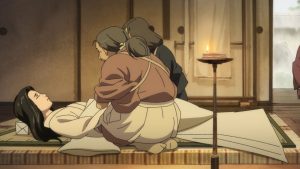 Let me just say for the record that I had a shit-eating grin on my face through most of the premiere of Dororo, which is always a nice feeling. It was one of those first episodes which just nails every note, every pause, every tempo change. That doesn’t always mean the feeling is going to last, as making a great premiere is a different matter than making a great series. But with no less than Tezuka Osamu behind the story, if ever there was a case of a series that should have staying power you’d think Dororo would be the one.
Let me just say for the record that I had a shit-eating grin on my face through most of the premiere of Dororo, which is always a nice feeling. It was one of those first episodes which just nails every note, every pause, every tempo change. That doesn’t always mean the feeling is going to last, as making a great premiere is a different matter than making a great series. But with no less than Tezuka Osamu behind the story, if ever there was a case of a series that should have staying power you’d think Dororo would be the one.
 My expectations for this show were pretty high, but it would be fair to say this premiere exceeded them. Hell, it was so good it’s even MAL readers liked it despite it not being an isekai, cute girls show or sequel. Pedigree speaks volumes – any Tezuka, even lesser-stature, counts for a lot. The godfather of action anime, Furuhashi Kazuhiro (Rurouni Kenshin) directing. MAPPA and Tezuka Productions teaming up. Hell, even something like getting Koike Takeshi (Redline, Afro Samurai) to direct the OP – which managed to be stunning despite the song itself being rather pedestrian.
My expectations for this show were pretty high, but it would be fair to say this premiere exceeded them. Hell, it was so good it’s even MAL readers liked it despite it not being an isekai, cute girls show or sequel. Pedigree speaks volumes – any Tezuka, even lesser-stature, counts for a lot. The godfather of action anime, Furuhashi Kazuhiro (Rurouni Kenshin) directing. MAPPA and Tezuka Productions teaming up. Hell, even something like getting Koike Takeshi (Redline, Afro Samurai) to direct the OP – which managed to be stunning despite the song itself being rather pedestrian.
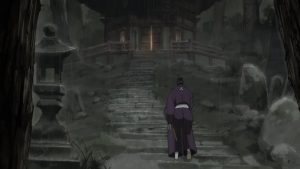 Furuhashi isn’t a panacea – he needs to have the right material to succeed. But if there were ever a case of horses for courses it’s Furuhashi and Dororo, and you can feel his confidence with the material seep through every pore of the premiere. Also of note is the look of the series, which is classic Tezuka character designs and fluid and stylish animation against a backdrop that looks like a series of wall scrolls hanging in a temple or palace somewhere (art direction is by Fujino Mari and background design from rising stars Studio Pablo). Veteran Ike Yoshihiro provides the soundtrack, which seamlessly adds to the story without ever threatening to overwhelm it.
Furuhashi isn’t a panacea – he needs to have the right material to succeed. But if there were ever a case of horses for courses it’s Furuhashi and Dororo, and you can feel his confidence with the material seep through every pore of the premiere. Also of note is the look of the series, which is classic Tezuka character designs and fluid and stylish animation against a backdrop that looks like a series of wall scrolls hanging in a temple or palace somewhere (art direction is by Fujino Mari and background design from rising stars Studio Pablo). Veteran Ike Yoshihiro provides the soundtrack, which seamlessly adds to the story without ever threatening to overwhelm it.
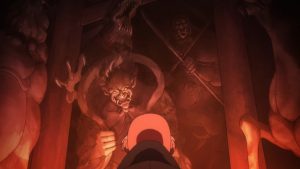 In short, it’s all great – if any anime could ever be timeless it would be a Tezuka adaptation, and Dororo answers the bell. Here he spins the tale of a daimyou named Kagemitsu Daigo (Uchida Naoya) in the early Warring States period whose lands are beset by plagues, poverty and general despair. He goes to a temple and enters the “Hall of Hell” where, after slaying the priest (whose last words are a chilling expression of gratitude for being killed before the atrocious state of the world and the futility of his prayers can make him doubt the Buddha), offers a bargain – he’ll give anything of his in exchange for prosperity for his lands and power for himself. Given that his wife was pregnant at the time, it’s hard to imagine Daigo didn’t have some idea of what might be involved.
In short, it’s all great – if any anime could ever be timeless it would be a Tezuka adaptation, and Dororo answers the bell. Here he spins the tale of a daimyou named Kagemitsu Daigo (Uchida Naoya) in the early Warring States period whose lands are beset by plagues, poverty and general despair. He goes to a temple and enters the “Hall of Hell” where, after slaying the priest (whose last words are a chilling expression of gratitude for being killed before the atrocious state of the world and the futility of his prayers can make him doubt the Buddha), offers a bargain – he’ll give anything of his in exchange for prosperity for his lands and power for himself. Given that his wife was pregnant at the time, it’s hard to imagine Daigo didn’t have some idea of what might be involved.
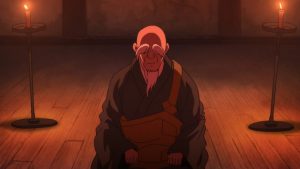 When Daigo’s son is born, he’s a terrifying apparition, with so skin or organs yet somehow alive. To his wife’s horror Daigo orders the baby to be destroyed but the kindly old midwife (who clearly has experience with this, as those in her position certainly would) offers the baby a chance by setting him adrift in a boat rather than on the water. She’s immediately eaten by a terrifying ayakashi, who’s in turn slain by a shamisen-wielding blind samurai, and the story flashes forward to 16 years later where we meet two key figures. First is Jukai (the peerless Ohtsuka Akio), a doctor who gives prosthetics to the dead on the battlefield. And the second is Dororo (Suzuki Rio), a brash young thief in the process of being beaten and drowned by three men from the caravan he’s just robbed.
When Daigo’s son is born, he’s a terrifying apparition, with so skin or organs yet somehow alive. To his wife’s horror Daigo orders the baby to be destroyed but the kindly old midwife (who clearly has experience with this, as those in her position certainly would) offers the baby a chance by setting him adrift in a boat rather than on the water. She’s immediately eaten by a terrifying ayakashi, who’s in turn slain by a shamisen-wielding blind samurai, and the story flashes forward to 16 years later where we meet two key figures. First is Jukai (the peerless Ohtsuka Akio), a doctor who gives prosthetics to the dead on the battlefield. And the second is Dororo (Suzuki Rio), a brash young thief in the process of being beaten and drowned by three men from the caravan he’s just robbed.
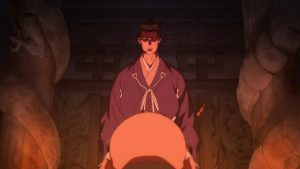 While there isn’t a lot of exposition from explanation here (obviously), it really isn’s needed – it’s easy to see how Tezuka fits these pieces together. The young swordsman with the doll-like face who saves Dororo – not from the traders, but the sludge monster who appears from the river and devours them – has no name or voice yet, but we certainly know who he is. And who raised him. It’s quite telling that after slaying the river monster the youth seems to regrow his skin – and at that moment we see that things are starting to go badly for Daigo’s now wealthy domains, where a son (quite human this time) named Tahoumaru (Chiba Shouya) is dutifully trying to care for Daigo’s sickly wife.
While there isn’t a lot of exposition from explanation here (obviously), it really isn’s needed – it’s easy to see how Tezuka fits these pieces together. The young swordsman with the doll-like face who saves Dororo – not from the traders, but the sludge monster who appears from the river and devours them – has no name or voice yet, but we certainly know who he is. And who raised him. It’s quite telling that after slaying the river monster the youth seems to regrow his skin – and at that moment we see that things are starting to go badly for Daigo’s now wealthy domains, where a son (quite human this time) named Tahoumaru (Chiba Shouya) is dutifully trying to care for Daigo’s sickly wife.
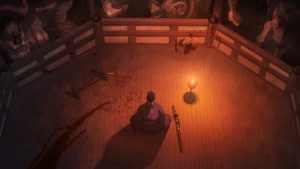 A powerful and timeless story, a legendary director and gorgeous production – what could possibly go wrong with Dororo? Well – it’d be nice to think that this series wouldn’t have been produced without the intent to do a full adaptation, but we have no episode count so who knows? One need look no further than Karakuri Circus to see what insane compression levels can to to an adaptation of a long-finished manga. There’s budget, too – we’ve seen MAPPA blow their load early and have things crater before (though never catastrophically). Still, it’s hard to stand in awe of a first episode this good and not feel optimistic about Dororo’s chances – clearly the potential for something very, very special exists here.
A powerful and timeless story, a legendary director and gorgeous production – what could possibly go wrong with Dororo? Well – it’d be nice to think that this series wouldn’t have been produced without the intent to do a full adaptation, but we have no episode count so who knows? One need look no further than Karakuri Circus to see what insane compression levels can to to an adaptation of a long-finished manga. There’s budget, too – we’ve seen MAPPA blow their load early and have things crater before (though never catastrophically). Still, it’s hard to stand in awe of a first episode this good and not feel optimistic about Dororo’s chances – clearly the potential for something very, very special exists here.
ED: “Sayonara Gokko” (さよならごっこ) by amazarashi


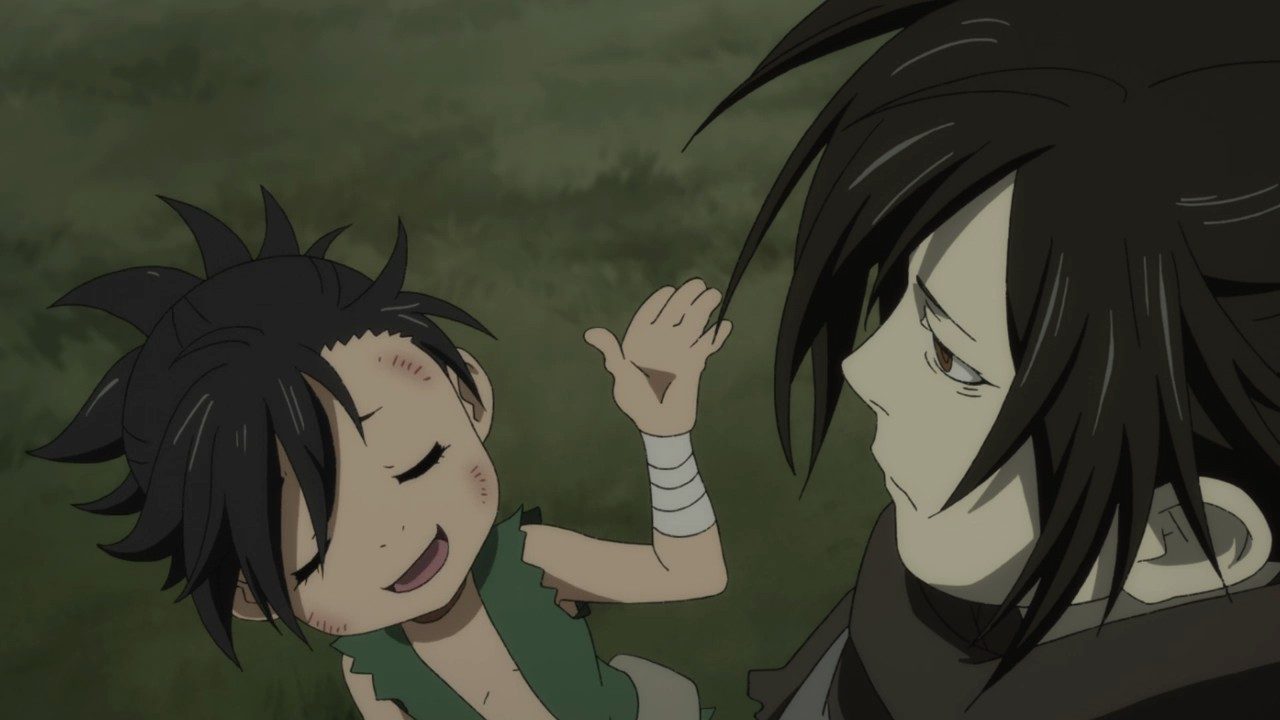
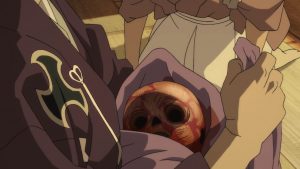
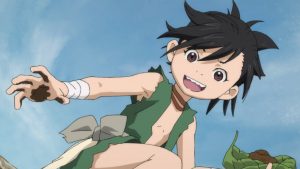

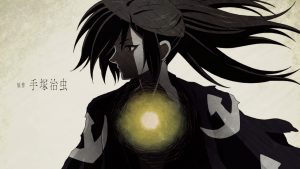

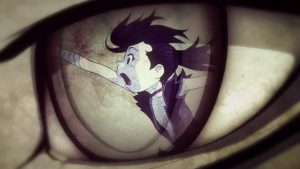
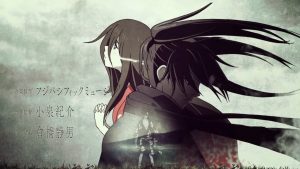

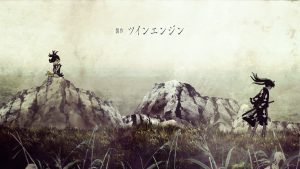
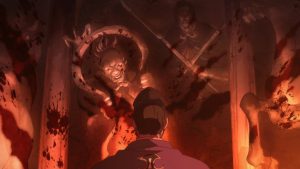
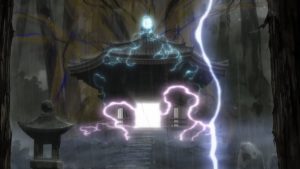
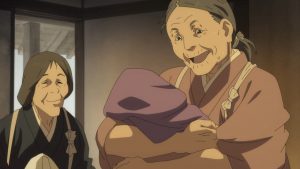
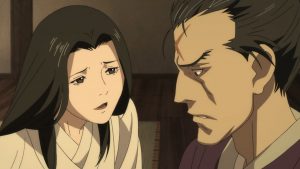
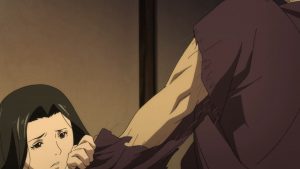
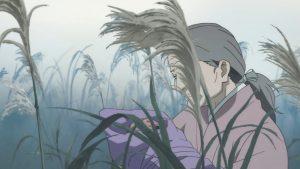
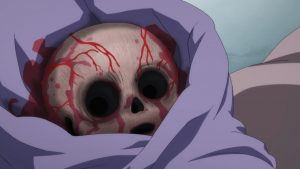
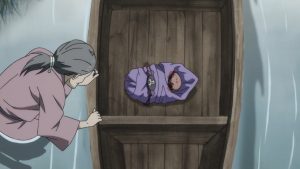
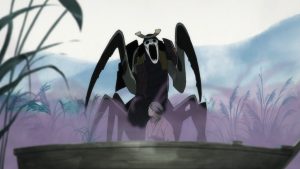
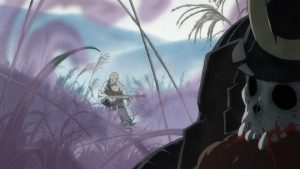
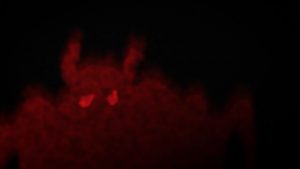
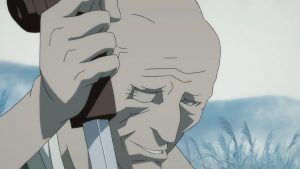
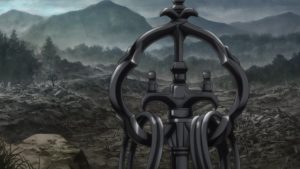
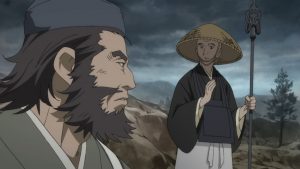
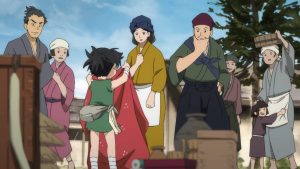
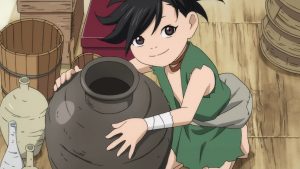
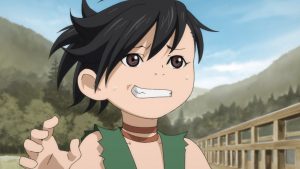
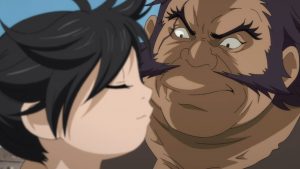
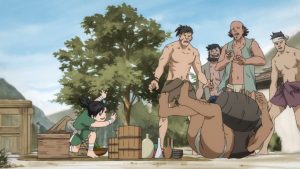
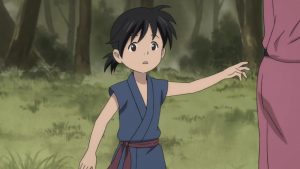
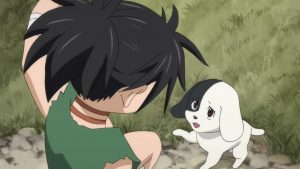
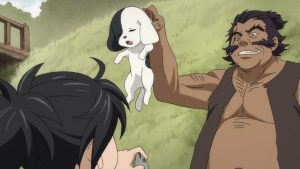
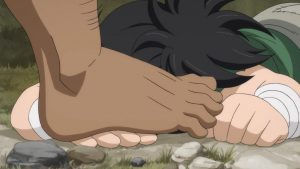
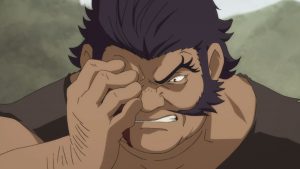
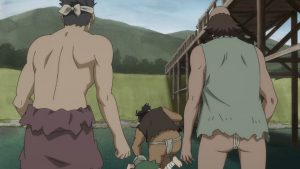
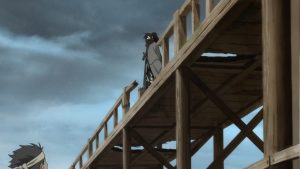
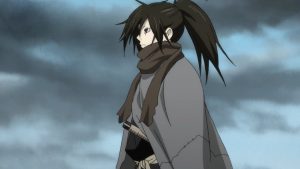
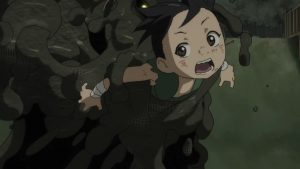
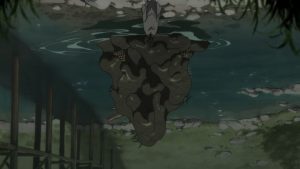
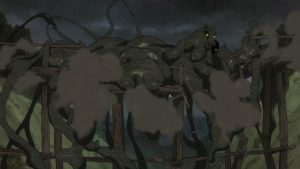
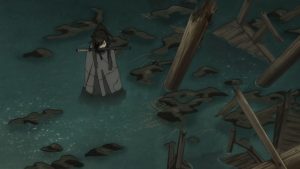

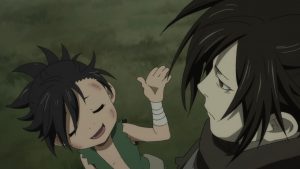

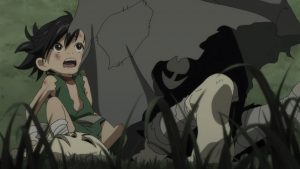
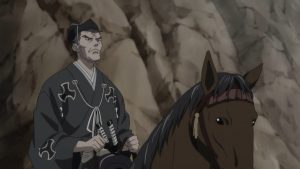
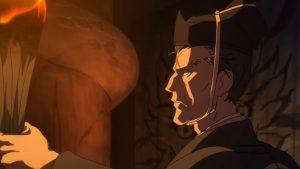
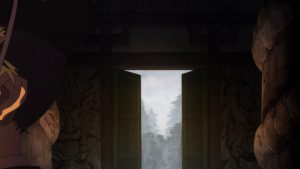
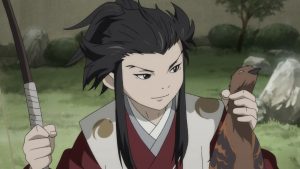
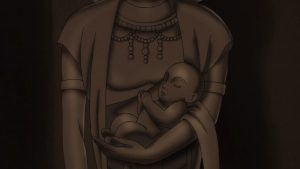
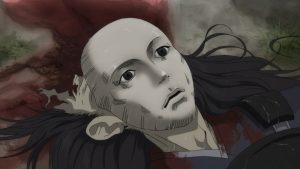
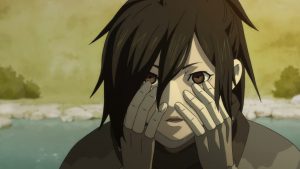
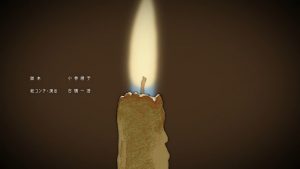
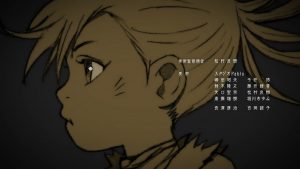

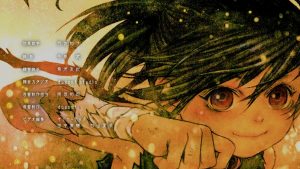
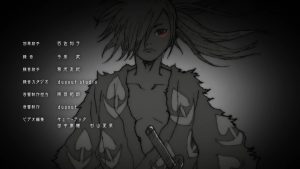
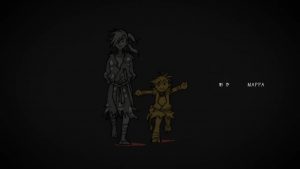
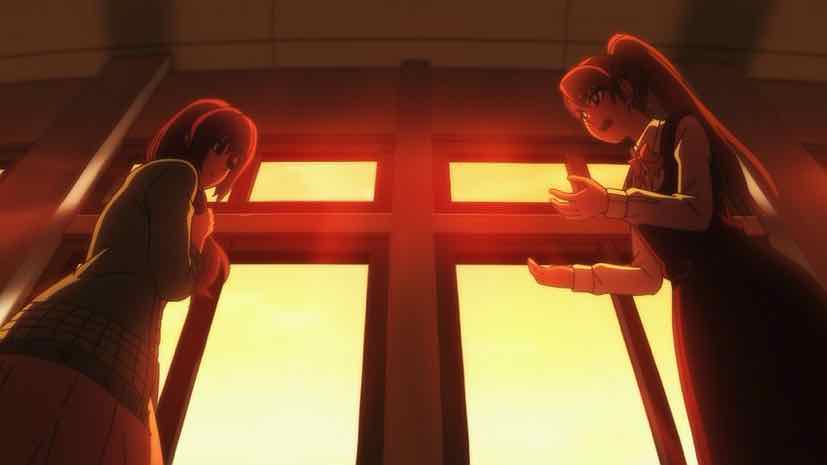
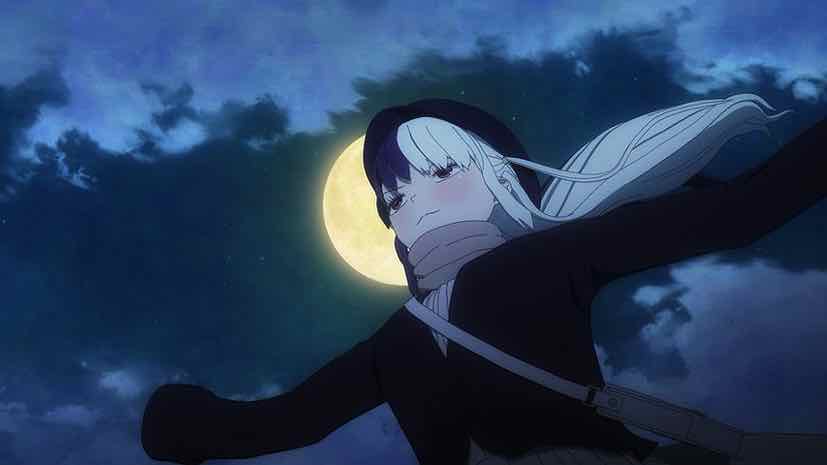
Kurik
January 8, 2019 at 7:01 pmI am hooked already. Reminds me of anime of old but that seems to be due to the fact that its based on an old manga. Definitely feel I will be sticking with this one. Couple things that puzzle me though….I am surprised the slugde demon was killed by having things fall on it….i mean…its sludge/semi liquid….Also I presume its one of the 48 demons hence the cracked demon statue and the return of the young mans face. And why the fertility statue’s face got zapped by lightening and was said to be a sacrifice…So many questions….
leongsh
January 8, 2019 at 9:37 pmI had my jaw drop and had a huge smile for the duration of the entire episode. At times, even oooing and ahhing. I had high expectations and this easily met them. Rewatched it 2 more times to make sure this wasn’t a mirage or a figment of my imagination. I dearly hope that it maintains this level throughout.
Guardian Enzo
January 8, 2019 at 10:13 pmI’ve heard some opinion that the manga isn’t Tezuka’s best work, but I haven’t read it myself so I couldn’t say.
leongsh
January 8, 2019 at 11:53 pmThe ED song, [ さよならごっこ ] (“Sayonara Gokko”), haunts me. It fits the show very well. I’ve been listening to the TV snippet a few times and can’t get enough of it. The single is coming out on 13th February.
Guardian Enzo
January 9, 2019 at 8:47 amYes, it’s great. Just a shame the OP song isn’t, although and animation sequence is fantastic.
Magewolf
January 9, 2019 at 2:56 amI have not read the manga either but I did play Blood Will Tell a very good ps2 action game based on it. I have read that the game made some changes including the ending,which is a shame since I liked the game ending. However it looks like the anime is cutting it down to 12 demons from the original 48 and every adaptation(game, movie, first anime ) has done something different with the ending, probably because the original was cut short by cancellation.
Matti
January 9, 2019 at 4:50 amWas okay, I guess. Not quite sold yet.
Will give it a couple more eps to judge the story. Not keen on the art – feels like a halfway-house between Tezuka’s style and whatever the studio were going for, while I feel a clean break would’ve been better. Fight scene was passable, though Balsa and Jiguro would’ve fallen asleep viewing it. I do appreciate Tezuka’s art – he did evolve, unlike Adachi and his Popeye arm fetish – but feel like it doesn’t quite translate to an action anime all that well. Or maybe it’s just a matter of not having enough budget?